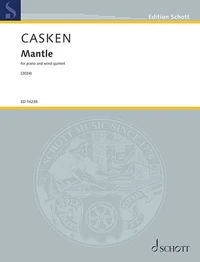The Anglo-Saxon poem The Dream of the Rood was probably written in the 8th Century and is the earliest dream-vision poem in Old English. A fragment of the poem from the section that describes the crucifixion can be found carved on the Ruthwell Cross in Dumfriesshire, and set in stone at a time when Ruthwell was part of the ancient kingdom of Northumbria. In responding to a commission for the Hilliard Ensemble, I was keen to find a dramatic text, but one that would also invite a musical response appropriate to the very nature of this kind of vocal quartet.
Writing for the Hilliards together with a mixed instrumental ensemble, and for a generous cathedral acoustic, has had a strong influence on the types of textures and sonorities I have used. The structure of the work is dictated by the form of the poem, but the music could also be seen as consisting of a sequence of motets with both vocal and instrumental interludes. John Casken Instrumentation : 4 voices (Countertenor, 2 Tenors and Bass) and ensemble
The Anglo-Saxon poem The Dream of the Rood was probably written in the 8th Century and is the earliest dream-vision poem in Old English. A fragment of the poem from the section that describes the crucifixion can be found carved on the Ruthwell Cross in Dumfriesshire, and set in stone at a time when Ruthwell was part of the ancient kingdom of Northumbria. In responding to a commission for the Hilliard Ensemble, I was keen to find a dramatic text, but one that would also invite a musical response appropriate to the very nature of this kind of vocal quartet.
Writing for the Hilliards together with a mixed instrumental ensemble, and for a generous cathedral acoustic, has had a strong influence on the types of textures and sonorities I have used. The structure of the work is dictated by the form of the poem, but the music could also be seen as consisting of a sequence of motets with both vocal and instrumental interludes. John Casken Instrumentation : 4 voices (Countertenor, 2 Tenors and Bass) and ensemble
